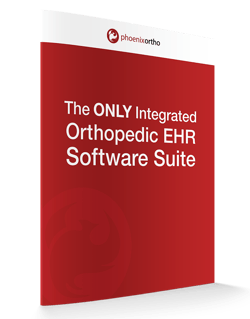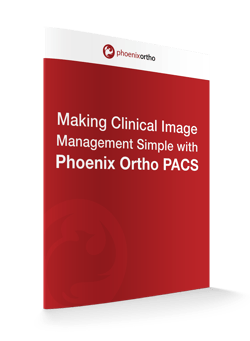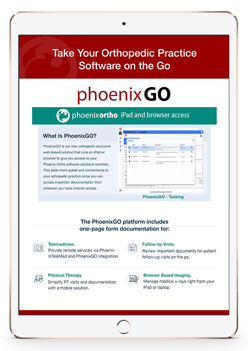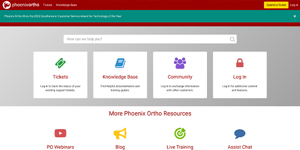Finding the right Electronic Health Records software (or EHR software) can have a significant impact on a medical practice’s ability to efficiently manage paperwork and help patients. However, the need to find an EHR specific to a clinic’s given subspecialty can make it difficult to find a good fit.
While a generic EHR system can work for general practices, using a system specifically designed for orthopaedic clinics enhances the benefits of using Practice Management software. How can you choose between different EHR systems to find the right one for your practice?
Here are a few tips for finding the right EHR system for your orthopaedic clinic:
Make Sure the Software Is an EHR, Not an EMR
While the terms Electronic Health Record and Electronic Medical Record (EMR) are similar (and are used interchangeably by some), there is a difference between the two that needs to be acknowledged. EHR systems tend to provide a more complete picture of a patient’s overall health while improving the accessibility of information and coordination for practitioners throughout the care facility.
So, one of the first things to check is that the software specifications state that it actually is an EHR, and not an EMR program.
Check That the EHR System Offers a Fully-Integrated Image Workflow
Orthopaedic clinics rely heavily on images such as X-rays or MRIs to inform or support diagnoses and treatments. As such, it is vital to choose an Electronic Health Records software that offers a picture archiving and communication system (PACS) as a part of the EHR system rather than a separate software.
Switching between two different software programs for patient encounters and imaging workflows makes dealing with paperwork more cumbersome. Having a PACS solution built into the EHR system helps orthopaedic clinics save time on administrative tasks. Additionally, by integrating the PACS solution with the EHR system’s workflow, orthopaedic clinics can massively improve their quality of care since their orthopaedic subspecialists will have easy access to X-rays and other images right in the patient chart.
See Whether Provider-Specific Adaptive Learning Is Part of the Software Specifications
As computer programs become more capable and advanced, software learning is becoming increasingly common. EHR systems with adaptive learning capabilities provide the benefit of being able to adapt to an orthopaedic clinic’s reporting needs, putting the most important information first so time is saved and patient care is improved.
However, it’s important to have an adaptive learning EHR that can provide this level of customization on a per-provider basis rather than just a clinic-wide basis. This is because different care providers may prioritize different things. For example, what a physical therapist needs to know for everyday patient care will most likely be very different from what an orthopaedic doctor needs to know for prescribing a treatment.
Check That the EHR System Can Save Your Orthopaedic Clinic Time on Administrative Tasks
Much of any clinical practice’s time and labor is spent on administrative tasks such as filing paperwork for patients, checking medical billing codes, and verifying insurance information. In fact, these administrative tasks can take so much time that they actively interfere with an orthopaedic clinic’s ability to help patients. According to information cited by Forbes, “for every hour physicians were seeing patients, they were spending nearly two additional hours on paperwork.”
Being able to reduce the time spent on paperwork is a key EHR benefit. However, an EHR system needs to be optimized for a clinical practice’s particular subspecialty (or subspecialties) to provide a significant improvement to time spent on administrative paperwork.
An Electronic Health Records software with a robust Practice Management solution built in can help with claims management and paperwork submissions to make tracking patient health insurance information and billing codes fast and easy. This helps to save time and labor on paperwork—freeing up valuable resources to help more patients and expand the practice.
See If the EHR System Has Patient-Facing Features to Enhance Engagement
Checking to see how well different EHR systems integrate your patients with your practice can be important when choosing an EHR for your orthopaedic clinic. Patient-facing features, such as at-home clinical history registration and update services, can help make your patients feel more involved in their healthcare regimen. This helps to:
- Improve patient engagement,
- Reduce no-shows, and
- Increase overall patient satisfaction with your practice.
Verify the EHR System Provider’s Implementation Services and Post-Sale Support
Does the EHR vendor offer any kind of implementation and onboarding support, or do they simply toss you an installation file and leave you on your own? An EHR system could be the best solution in the world for your clinic, but if the vendor does not provide any post-sale support or implementation services to help you integrate it with your practice, you might not be able to use that solution to the fullest.
Checking with different EHR system vendors to see what implementation services and post-installation support they offer can be a very important step in choosing the right software to support your orthopaedic clinic.
Need help optimizing your practice management processes to make your orthopaedic clinic more efficient so you can help more patients? Contact Phoenix Ortho today to get advice, or schedule a demo at the link below!
Schedule a 1:1
Get in touch with Phoenix Ortho to learn more about how you can save time, money, and mouse clicks with an orthopedic-specific EHR.






















